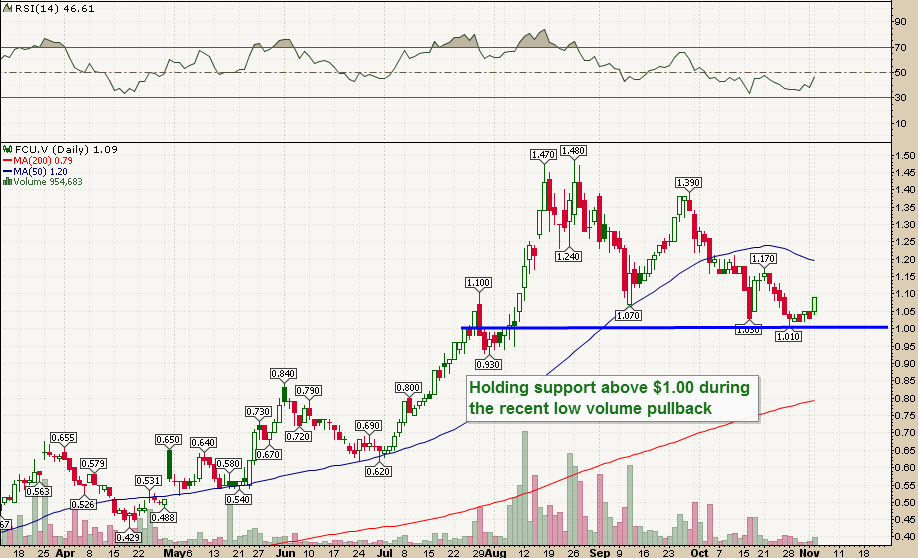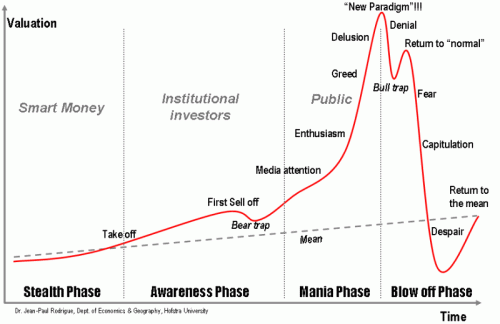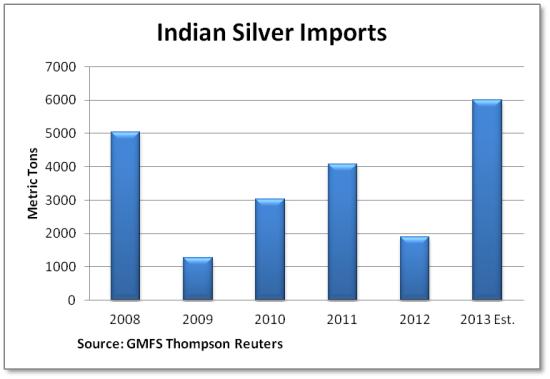Stocks & Equities
Sprott USA Chairman Rick Rule, the Carlsbad, California based natural resource financier with nearly four decades of experience, joined us for a conversation earlier today on the current mining bear market, which is approaching its third anniversary. As expected, Mr. Rule was upbeat, and sounds to be making the most of the opportunities being presented to him.
“Junior capital markets may be closed but Sprott is not. We are aggressively trying to allocate capital in this market.”
Mr. Rule’s only complaint is that issuers (read: small, pre-revenue, hope and dream mining companies) still think they are entitled to financing terms of the 2003-2010 bull market. Mr. Rule said that during that period, half of Canadian listed junior mining companies were spending more than 50% of their capital on general and administrative expenses.
“The exploration industry was stupidly overcapitalized from 2003-2010. Every truly great party causes a truly monumental hangover. We’re in that phase now.”
Mr. Rule is not at all depressed about the current mining bear market, however. He thinks that the top 10-15% of junior companies have already bottomed, and notes that discoveries, such as RMC, FCU or AOI, are continuing to reward investors with five and ten-baggers.
Rule predicted it will take another 18-24 months for resource equities to fully rebound. The largest mining companies are already starting to show compelling valuations, Rule says, which will ultimately attract global capital flows.
We were able to ask Mr. Rule about a few stocks that he’s mentioned in the past, includingFission Uranium, which he feels is being held back by a weak uranium spot price. “Unless I’m wrong and the exploration becomes less predictable, I’ll own the name until it has a different symbol.”

….3 more stocks & commentary HERE

Pension funds and US institutions are upping their wager on the US dollar as the funds bought the most dollar denominated assets since January of 2009.
Click here to read more.
Robert Levy
Border Gold Corp.
www.bordergold.com | 1.888.312.2288


Richard Russell: “My thoughts go back to 1957. I wrote my first article for Barron’s in December of 1957, in which I noted that we’d never had a third speculative phase in that bull market. Soon a vicious recession was on, and everybody was bearish. I predicted that despite the recession, we would see a speculative third phase in the secular bull market. The third phase did come, and my forecast proved correct.
I’m wondering whether the same situation exists today, with the speculative third phase somewhere in our future. Despite the sluggish GDP, I believe you will see a third phase speculative blow-off in this bull market. Often in a bull market’s third phase, profits are larger than anything seen during the first and second phases of the bull market. For this reason, my current thinking is that subscribers should hold gold and DIAs. The last thing investors are expecting now is a profitable third phase explosion in stocks, and perhaps something close to hyperinflation in the money market.
I believe you see a phenomenon where increasingly bullish retail buyers are coming into this market, while at the same time institutional money is taking profits and moving to the sidelines. I expect this action to accelerate in the coming months, leading to an upside boom in stocks, along with a good deal of churning action. It is now recognized that the forces of deflation are pressing down on the US economy, and that more QE will be needed. This will halt deflation and gradually lead to inflation, finally being expressed as a boom in the stock market.
Thus the great bull market will end as all bull markets do: with a massive entrance of the retail public and subtle distribution by institutional money. Our subscribers’ choice: going into what appears to be a growing stock market bubble, or remaining in the universe of gold, which is acting as though it is at a bear market bottom.
As for gold, China is accumulating all it can at these attractive prices. It seems to me that China is intent on creating the world’s largest hoard of gold. The Golden Rule: “He who owns the gold makes the rules,” and owns the reserve currency … I think the present system has, in effect, been destroyed by more debt than we can handle. I think a new system will be required, a system based on gold, which will automatically put a brake on debt.”

To subscribe to Richard Russell’s Dow Theory Letters CLICK HERE.
About Richard Russell
Russell began publishing Dow Theory Letters in 1958, and he has been writing the Letters ever since (never once having skipped a Letter). Dow Theory Letters is the oldest service continuously written by one person in the business.
Russell gained wide recognition via a series of over 30 Dow Theory and technical articles that he wrote for Barron’s during the late-’50s through the ’90s. Through Barron’s and via word of mouth, he gained a wide following. Russell was the first (in 1960) to recommend gold stocks. He called the top of the 1949-’66 bull market. And almost to the day he called the bottom of the great 1972-’74 bear market, and the beginning of the great bull market which started in December 1974.
Letters are published and mailed every three weeks. We offer a TRIAL (two consecutive up-to-date issues) for $1.00 (same price that was originally charged in 1958). Trials, please one time only. Mail your $1.00 check to: Dow Theory Letters, PO Box 1759, La Jolla, CA 92038 (annual cost of a subscription is $300, tax deductible if ordered through your business).














